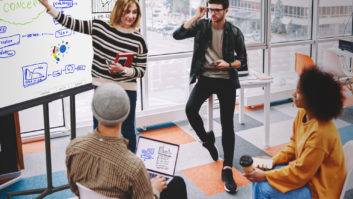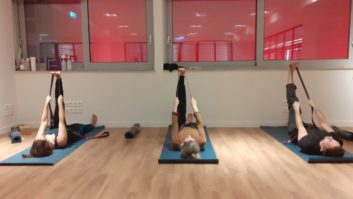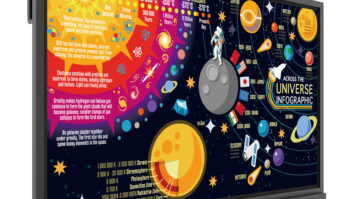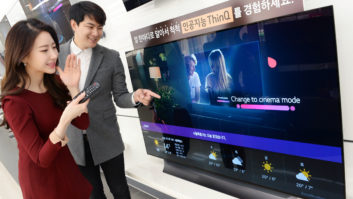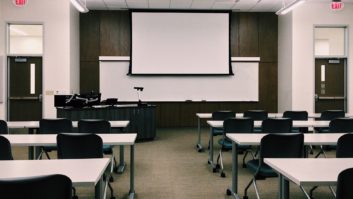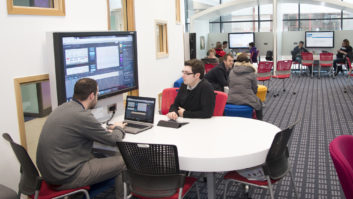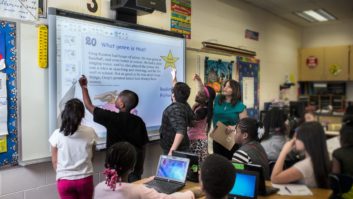
Technological advancement is changing education methods. Steve Montgomery looks at the ways learning is evolving, including the development of personalised learning techniques.
The requirement for advanced audiovisual and electronic equipment across the educational market sector is massive. A recent report by Futuresource Consulting estimated that the global spend on education technology within classrooms reached $13 billion last year, 11% higher than the previous year, and indications are that a strong growth rate will be sustained for the next five years at least. Around 62%, is channelled towards the purchase of mobile devices as interactivity, collaboration and group learning displace the ‘stand-and-deliver’ approach that has been the mainstay of education for decades.
The current generation of children and young people are highly conversant with digital technology in all its forms and readily take to interactive networked solutions. The interactive whiteboard (IWB), for so long the staple teaching aid, has evolved to encompass this trend. “Over the past decade, the school model for technology amounted to an interactive whiteboard at the front of the class: essentially a digital tool that allowed the teacher to use a ‘whole-class’ approach to lessons,” says David Lapides, director, software strategy and channels, SMART Technologies. “Now with sophisticated technology such as tablet computers becoming more commonplace, we see an increased emphasis on one-to-one and small group learning. Some schools are placing two or three interactive displays in a classroom to enable students to work separately from the larger group. In response SMART has developed a collaborative learning cloud-based software suite called SMART amp. It includes vast amounts of rich digital content and it can work on virtually any device that has a browser.”
Personal touch
Personalised learning techniques and resources have developed over recent years, driving the development and adoption of both hardware and software in schools. “Learner-response systems remain a popular choice to facilitate personalised learning and there has been a definite shift towards one-to-one and BYOD (bring your own device) strategies,” says Ian Curtis, head of Western Europe, Africa & ANZ, Promethean. “By connecting pupil devices with the front of class teaching solution, our ClassFlow all-in-one teaching platform increases the collaboration opportunities that can be supported, and, equally importantly, helps to increase the teacher’s effectiveness. One of the drivers behind the development of ClassFlow is that teachers find the increasing number of classroom technologies and increasing number of lesson resources increasingly unmanageable. ClassFlow helps resolve this by giving teachers one teaching solution to use across all classroom technologies and one solution with which to prepare and deliver lessons and collect feedback.”
DisplayNote is collaborative software used extensively in classrooms and training rooms, with around a million licenses shipped in 2013. Paul Brown, CEO of DisplayNote Technologies, explains: “The software and app solution allows teachers to share their lessons directly from the classroom display to the student devices. Any presentation, document or image can be shared and any changes made can be seen on all the devices. Using the DisplayNote app, students take screenshots on their tablets and make notes on the lesson content with the ability to share their work back to the classroom display.”

